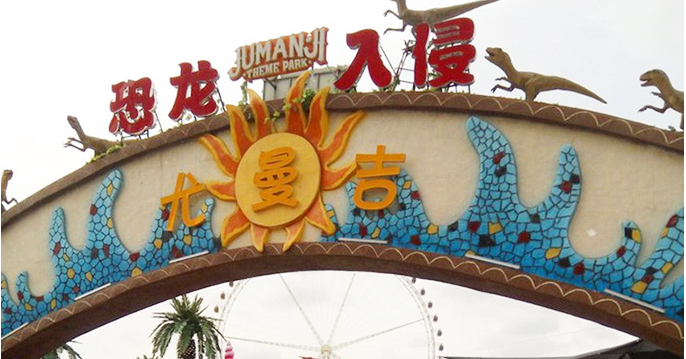- Albanian
- Arabic
- Belarusian
- Bengali
- Czech
- English
- French
- German
- Hebrew
- Hungarian
- Indonesian
- irish
- Italian
- Japanese
- kazakh
- Persian
- Russian
- Thai
- Uzbek
- Vietnamese
rollercoaster designer
Designing the Ultimate Roller Coaster Experience
Roller coasters have long been a defining feature of amusement parks, captivating thrill-seekers and families alike with their innovative designs and exhilarating experiences. As technology evolves and entertainment preferences shift, the role of a roller coaster designer becomes increasingly complex and exciting. In this article, we will explore the essential aspects of roller coaster design, the technological advancements that have shaped the industry, and the challenges and opportunities that lie ahead.
The Fundamentals of Roller Coaster Design
At the heart of any successful roller coaster lies a well-executed design concept. Roller coaster designers must meticulously consider multiple factors, including physics, safety, aesthetics, and the overall guest experience. The primary goal is to create a ride that offers thrills while ensuring the safety of its riders.
One of the most crucial components of roller coaster design is understanding the principles of physics, especially forces like acceleration, centrifugal force, and gravity. Designers must calculate the appropriate height, speed, and angles to provide exhilarating drops and turns, while also carefully managing the forces that riders experience throughout the ride. This understanding aids in deciding the ideal layout, whether it involves high-speed straightaways, sharp turns, or vertical loops.
Innovative Technologies in Roller Coaster Design
In recent years, advancements in technology have revolutionized the way roller coasters are designed and constructed. Computer-aided design (CAD) technology allows designers to create, modify, and visualize their concepts in real time, providing a more efficient design process. This technology also facilitates complex simulations, enabling designers to assess how a proposed coaster will perform and feel, long before any physical construction begins.
Furthermore, the introduction of virtual reality (VR) has opened new avenues for enhancing the roller coaster experience. By incorporating VR headsets, designers can transport riders into an immersive world, synchronizing the visuals with the ride's movements. This combination of physical elements and digital experiences creates a unique allure, appealing to a tech-savvy audience.
rollercoaster designer

Safety Considerations
Safety is paramount in roller coaster design. Designers must adhere to strict regulations and conduct extensive testing during the development process. They must consider potential risks, such as mechanical failures, rider behavior, and environmental factors. State-of-the-art safety features, such as automated braking systems, seat restraints, and emergency shut-off mechanisms, are integrated to protect riders at all times.
Moreover, designers often run simulations and physical tests to evaluate how the roller coaster performs under various conditions. Analyzing these tests helps to identify potential weaknesses and ensures that every coaster can handle the stresses of regular operation.
The Future of Roller Coaster Design
As the demand for unique and thrilling experiences continues to rise, the future of roller coaster design looks promising. We are seeing trends that incorporate sustainability, such as utilizing recycled materials and low-energy systems. Designers are also experimenting with themes and narratives, creating coasters that tell stories and immerse riders in captivating worlds.
Additionally, the potential for integrating augmented reality (AR) into roller coasters could further enhance the experience. By layering digital elements over the physical ride, designers can create interactive experiences that evolve with each ride, enticing guests to return.
Conclusion
Roller coaster design is an intricate balance of creativity, engineering, and safety. As technology advances and public expectations evolve, designers face both challenges and exciting opportunities. Ultimately, the goal remains the same to create unforgettable experiences that leave riders exhilarated and coming back for more. Each new coaster represents a blend of artistry and engineering, capturing the spirit of adventure that amusement parks aim to offer. Whether soaring through the air or spiraling down a steep plunge, the thrill of the ride is what keeps us screaming for joy, and the roller coaster designer is the mastermind behind that electrifying experience.
-
Flume Ride-Hebei Zhipao Amusement Equipment Manufacturing Co., Ltd.|Thrilling Water Attraction&Customizable DesignJul.30,2025
-
Flume Ride - Hebei Zhipao Amusement Equipment | Water Coaster, Thrilling DescentJul.30,2025
-
Flume Ride - Hebei Zhipao | Thrilling Water AttractionJul.30,2025
-
Flume Ride: Thrilling Water Attraction by Hebei Zhipao|Log Flume Manufacturers&Flume Ride DesignJul.30,2025
-
Flume Ride-Hebei Zhipao Amusement Equipment Manufacturing Co., Ltd.|Thrilling Water Coaster, Safe DesignJul.30,2025
-
Flume Ride-Hebei Zhipao Amusement Equipment Manufacturing Co., Ltd.|Thrilling Water Attraction, Safe DesignJul.30,2025
